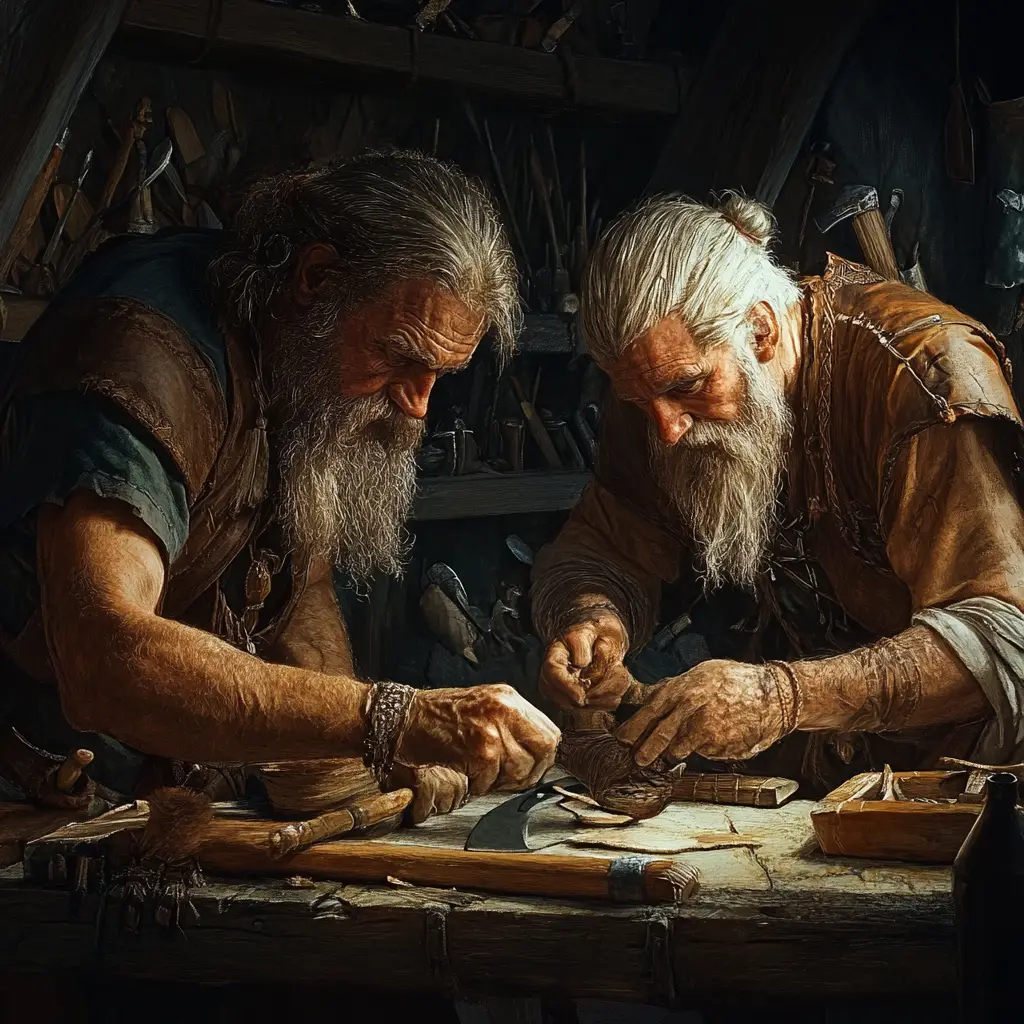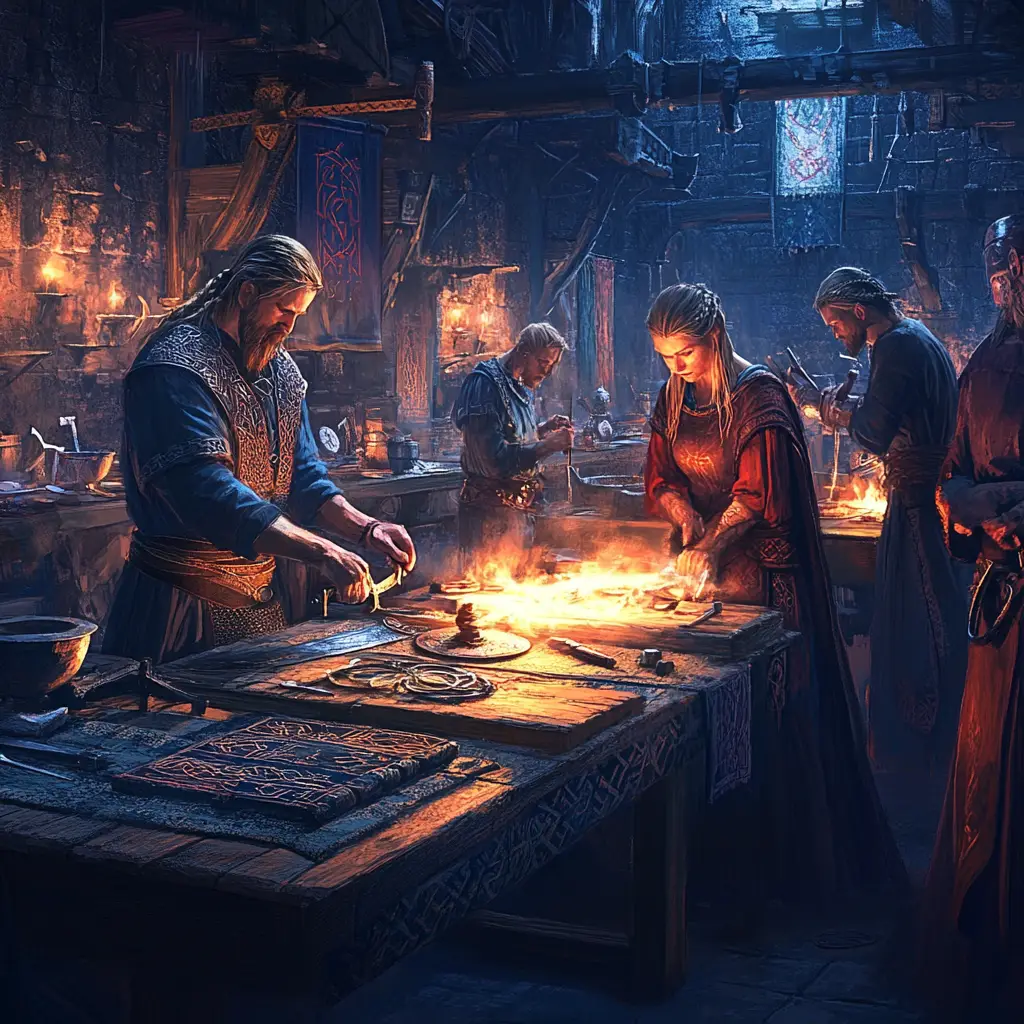A Blend of Function and Beauty
The Vikings, known for their seafaring and warrior culture, were also highly skilled artisans. Viking art and craftsmanship reflect their innovative spirit, practical needs, and a profound connection to nature and mythology. Their work spanned various materials and styles, influencing cultures across Europe and beyond.
Key Characteristics of Viking Art
Interlacing Patterns and Motifs
Viking art is renowned for its complex interwoven designs, featuring animals, humans, and mythical creatures.
These patterns are symbolic, often depicting themes of life, death, and cosmological beliefs.
Functional Aesthetic
Most Viking artifacts were practical objects, such as weapons, tools, ships, and jewellery, elevated with ornate designs.
Natural Materials
Vikings primarily worked with wood, bone, antler, metal, and stone, utilizing materials readily available in their environment.
Styles of Viking Art
Viking art evolved through several distinct styles over centuries, with each reflecting regional and cultural influences:
Oseberg Style (800–850 AD)
Found on the Oseberg ship burial, this style features flowing, ribbon-like animal designs with gripping paws.
The intricate carvings demonstrate the Vikings’ mastery in woodwork.
Borre Style (850–950 AD)
Characterized by geometric patterns, such as knots and interlacing, often combined with animal motifs.
Common in jewellery, weapons, and metalwork.
Jelling Style (900–975 AD)
Features symmetric, stylized animals, often in profile with spiral hips and elaborate tails.
Named after the Jelling stones in Denmark.
Mammen Style (950–1025 AD)
Blends animal motifs with plant-like forms, creating a sense of organic fluidity.
Found on weapons, including axes, and textiles.
Ringerike Style (1000–1100 AD)
Inspired by European art, featuring serpents, birds, and plant scrolls.
Frequently seen in stone carvings and manuscripts.
Urnes Style (1050–1200 AD)
The final Viking art style, characterized by slender, elongated animals intertwined in intricate compositions.
It shows a transition to Christian symbolism.
Craftsmanship Across Disciplines
Metalwork
Vikings were exceptional blacksmiths and jewellers, crafting detailed brooches, arm rings, and swords.
Techniques included filigree, engraving, and inlaying precious metals like silver and gold.
Wood Carving
Ships like the Oseberg and Gokstad vessels were adorned with intricate carvings, often depicting animals or mythological scenes.
Wooden objects, from furniture to religious idols, were elaborately decorated.
Textile Production
Viking women were skilled in weaving and dyeing textiles, producing clothing and tapestries with intricate patterns.
Wool, flax, and plant-based dyes created garments both functional and decorative.
Bone and Antler Work
Everyday items like combs, tools, and game pieces were crafted from bone and antler, often with detailed engravings.
Runestones and Stone Carvings
Runestones were monumental carvings, often inscribed with runes and adorned with artistic patterns.
These stones served as memorials, markers, or storytelling devices, blending writing and art.
Viking Ships: Functional Art
Viking ships, like the longships and knarrs, were not only engineering marvels but also works of art.
Dragon-head prows and carvings reflected status, protection, and mythological significance.
Mythological Influence
Viking art often depicted Norse gods, creatures, and symbols, such as Odin, Thor, and the Midgard Serpent.
These motifs connected their craftsmanship to their worldview and belief systems.
Legacy of Viking Art
Viking art influenced the medieval art of Scandinavia and beyond, merging with Christian styles after the Viking Age.
Today, it remains a source of inspiration for modern design, jewellery, and cultural identity.



